The best rookies in 2025 draft: Flagg s best competitor, Harper s best shooting creator
Translator's note: The original text was published on ESPN, and the data in the text were all as of the time of publication (June 14 local time), and the date involved has been converted. The views in the article have nothing to do with the translator and the platform. Over the past year, management of NBA teams has been running around the world in preparation for the 2025 draft, examining potential rookies and continuously narrowing their roster. Now, we have entered the decision-making stage. The scout report is full of details and descriptions used to distinguish rookies. Of course, the assessment covers countless factors – but which rookies have won the title of “Best”? Among this rookie, who is the best organizer, shooter and defender in people's minds? Best Ballkeeper: Jeremiah Fells, defender, Oklahoma Top 100 Rookies Ranking: No. 7 Fells' performance at Oklahoma completely exceeded expectations, thanks in large part to his excellent ball-handling skills and his ability to roam the whole game with skillful dribbling and put defenders out of balance. He is not the tallest or strongest guard, but he uses his rhythm changes and intuition to put unremitting pressure on the inside to hit the basket. Fels is smooth and decisive in holding the ball, not dribbling like the expected defenders of his age - his way of creating space is more practical than fancy. This is really impressive for an 18-year-old who jumped to college a year early. As his jumper threat continues to grow and his decision-making skills improve, Fells should be a more threatening offensive player. Best Shooting Creator: Dylan Harper, guard, Rutgers University's Top 100 Rookies Ranking: No. 2 Harper's combination of figure, strength, rhythm, finishing skills and vision makes him the top shooting creator in this draft. Although the team around him wasn't the best at Rutgers, that was fully demonstrated at the moment of his best performance – his decisiveness and explosiveness allowed him to tear the defense and create shots for himself and his teammates. According to Synergy's data, Harper's performance as a pick-and-roll holder (including assists) exceeded 87% of the players, and in a singles situation, his shooting percentage also reached a solid 36.8%. He shot 67.6% from the basket. His comprehensive offensive statistics allow him to be compared with active NBA players Cad Cunningham and Jaylen Brunson. Harper's ability to make decisions quickly, use explosive power to play in confrontations, tear off defense and pass the ball throughout the game has made him stand out in this rookie, and he has the ability to ultimately shoulder the banner of offense for a successful NBA team. Best pick-and-roll organizer: Casparas Yakujonis, defender, University of Illinois Top 100 Rookies Ranking: No. 10 From it turns out that when Yakujonis uses the cover in front of him to attack, he is a particularly difficult player to defend, his vision, creativity and a keen sense of timing intertwined, making him an excellent organizer. Most of his offense comes from ball-holding screens—including assists (more than 65% of the players in the U.S.), and his 501 ball-holding screens (at the highest level in the U.S.) have a 41.7% chance of converting into scoring. This number is even more impressive considering that Illinois didn’t have a stable three-point shooting or ideal space around him last season. When the defense deployed heavily in the penalty area, Yakujonis was able to get a shot more freely, and his jump shot became an effective weapon to make up for his mediocre explosiveness near the basket. Although he sometimes plays too impatient and leads to some risky mistakes, his figure, selfless mentality and instinct to break through in confrontation should translate well into the NBA role, whether as a full-time point guard or a dual-sports guard playmaker. Best pick-and-roll terminator: Ryan Calke Brenner, center, Creton University's top 100 rookies ranking: No. 33, In his five-year college career, Calke Brenner has grown into an extremely efficient terminator, even if some people may think that his playing style is effective but boring. The 2.18-meter-tall big man shot an astonishing 73.1% of the basket last season, and his two-point shooting percentage exceeded 70% for three consecutive seasons. But because Calc Brenner's bullet speed is not the fastest and the power to complete the offense in confrontation is not the strongest, so people have reason to question the extent to which this level of offense can continue to the NBA. However, the 23-year-old has an excellent sense of space, is good at making himself a catch target, and has a great feel when catching the ball, which has contributed to his wide range of catches and made him an excellent all-receive threat. Although NBA scouts predict that he will not be a stable starter—he will be at most at the end of the first round—he can be an efficient, low-use center from the data, because his main added value will be to protect the penalty area on the defensive end. Best Emergency Stop Jumping Scorer: Es Bailey, forward, Rutgers University's Top 100 Rookies Ranking: No. 3 In this draft, no one has more threatening performance than Bailey in a small space. He can pull up and shoot from a difficult angle on the defender. And his ability to shoot after hitting a difficult dribble gives him a great scoring prospect. Although he is still relatively rough at the age of 18 and hasn't received much help from Rutgers except Harper, this technical feature of Pele has been a big hit this past season; he is far from the most stable player of this rookie, but no rush-stop jumper has a better long-term prospect. Pele hit an impressive 47% of mid-range jump shots last season—many of which were disturbed shots—a sign of his shooting ability, although he has plenty of room for improvement from the free throw line and 3-point line. The star potential some scouts see in him is that he can continue to score with high efficiency, which is a rare skill for a 2.02-meter wing player. Best Bounce/Dunker: VJ Edgecom, guard, Baylor University's Top 100 Rookies Ranking: No. 4 Edgecom's dunk that was enough to be selected for the highlights completed his declaration of entering college basketball. He is an exciting and very practical player who can apply his explosive power to the game scene, which in the long run, as a shooting creator may give him a huge advantage. He has made 33 dunks at Baylor this season — an excellent number for a guard, and he can play against his opponent near the rim, both as a terminator and on the defensive end. His amazing vertical bounce, 88 kg of strong body and quick first steps underline his upward potential as a player, and some teams believe he can grow into a physically talented main defender. Best body size: Carter Bryant, forward, University of Arizona Top 100 Rookies Ranking: No. 12 Bryant has a strong figure, with a height of about 2.03 meters in shoes, a wingspan of 2.13 meters, wide shoulders, and a weight of 97 kg. His standard basketball figure has been a selling point that attracts scouts all season. Although his wingspan is not top, his plasticity—scouts think he has more room to gain muscle—is a big part of his appeal: not only is he a reliable 3D rookie; but as he continues to gain weight, he may be able to truly defend the second, third, and fourth players. The template closest to Bryant's body size is Dorian Finney Smith of the Los Angeles Lakers, who has an excellent NBA career. However, Bryant's natural strength should lead to a better defensive comprehensiveness. Bryant, who is only 19 years old, has left people with room for optimism and has also added bargaining chips to the end of the lottery zone. Best fixed-point shooter: Con Knippel, guard, Duke University's top 100 rookies ranking: No. 8 Knippel's shooting is almost automated after gaining a foothold. His fixed-point shooting percentage is 48.8% without dribbling, and his total jump shot from all catches is 43% (more than 92% of players), and his three-point shooting percentage is 40.6%. His clean and neat technical moves and textbook-like attack posture support these data, and undoubtedly his projection ability provides a valuable lower limit for his future prospects. Most of his shots come from assists, and he has underperformed the shot after dribbling (32.8% shooting), but Kniper is able to provide excellent space abilities immediately and should bring value during his rookie contract. If he can lift his shot after dribbling to another level, his ceiling will become interesting. Best Mobile Scorer: Trey Johnson, defender, University of Texas Top 100 Rookies Ranking: No. 5 Johnson proved himself to be a high-level shooter at the University of Texas, where he was asked to undertake a lot of ball-holding tasks. He is also particularly efficient at using screens to complete shots, according to Synergy, he has performed more than 91% of players in this type of tactics, while shooting 52.1% from the field and proves that he is equally good when moving left and right. Johnson has fast, compact shooting moves, and his potential to be a top off-ball scorer provides a valuable path to his NBA success, as his shooting threats are likely to create space. Johnson doesn’t necessarily need to be the number one scoring choice to reflect value, which greatly raises his lower limit when predicting his prospects. Best Stadium Vision: Yegor Jamin, defender, Brigham Young University's Top 100 Rookies Ranking: No. 11, 2.03 meters tall, Jamin has dazzling passing skills and is the most eye-catching playmaker in this draft. He has a vision that can surpass defensive players and is willing to try things that most players will not do. He is a creative passer with a great time, and this skill should allow him to make his impact, whether as a full-time ball holder or an off-ball player. He can send a difficult diagonal pass through the ball, forcing the defensive square round to convert positions, which often leads to "hockey assists" that are statistically unrealized. Although Jamin is not a single player born to create opportunities for himself, as long as he can hit enough shots that the defense dare not take it lightly, he should be quite threatening when using the ball screen or as the starting point of the second offense. Best Raster Guardian: Joan Bellinger, Center, Sedvita Olympia (Adria League) Top 100 Rookies Ranking: No. 15 Belinger's draft market has soared this season as scouts gradually head to Europe to watch his game, and he showed excellent defensive intuition and blocking ability at the age of 18. In his first season with Sedvita's senior team, Bellinger scored the highest block rate in the Adriatic League – 2.9 blocks in all games after a 40-minute rhythm adjustment. He is 2.11 meters tall and has an arm span of 2.25 meters. For a player who is still adapting to his body and has very little experience, his defensive coverage is already quite outstanding.. While Clayton's form may be good and bad, he showed a trait that was truly adapting to the big scenes - similar to what Shabaz Napier did in 2014, pushing himself into the first round of discussion. This mentality of daring to shoot key balls is exactly what teams like to bet, and they hope that Clayton can quickly become a useful rotation player and a scorer on the bench. Best Fighting: Ugo Gonzalez, shooting guard/small forward, Real Madrid (Spain) Top 100 Rookies Ranking: No. 23 Gonzalez's role in Real Madrid has been unstable - a common for a junior rookie who tries to stand out from one of the world's top clubs - but his character as a player has long been extremely hard to play. This is reflected in the defensive end, he is willing to do dirty and tiring work: interfering with passing routes, fighting for rebounds, and even contributing exciting blocks. He will run hard in the offense and defense transition and is always willing to make sacrifices for the benefit of the team. Gonzalez's desire to play has always been loved by scouts, which has also helped him gain more trust and playing time in the past month. His sporadic offensive output has made it difficult for him to improve his market over the past year, but teams know what efforts he can bring, which gives him a chance to win a place in due course. Best Backstory: Maxim Renault, center, Stanford University's top 100 rookies ranking: No. 24, Renault's late-stage basketball career unfolds along a unique trajectory: He didn't start working full-time in the sport until his last year in high school in Paris, after he focused on swimming and chess. Even after joining the French club Nanteir, he was not considered a top rookie. There he had a close relationship with a rising star named Victor Vinbanyama, before he finally decided to play college basketball at Stanford. For academic reasons (he initially planned to pursue astrophysics), he was attracted by the school and enrolled as a scholarship player, before switching to a full scholarship, eventually becoming the starting center. Renault is well received for his kind personality, and now basketball is his entire focus, teams see him as a player with unexplored potential, and his explosive performance in the Chicago joint trial helped cement him as a first-round rookie. Best Intangible Assets: Kaman Maluarch, Center, Duke University's Top 100 Rookies Ranking: No. 6 As one of the most inside deterrent players in the college basketball court, Maluarch has brought great influence to Duke University, so he is expected to be the first center to be selected in the draft, but his attractiveness as an NBA rookie is also largely related to his character and what he can bring to the locker room. Born in South Sudan, Maluach later took refuge in Uganda with his family, where he had been exposed to basketball late before joining the NBA African Academy and established a good reputation there. Maluach meets all the criteria that each team is looking for off-court: he is considered a beloved teammate, a fighting contender, a great on-court communicator and a hard-working player, and he will provide value to a team in these aspects. His tremendous advancements in technology and stability over the past few years have proven his character, and he has transformed himself from a rough player to a top rookie in a short time. 
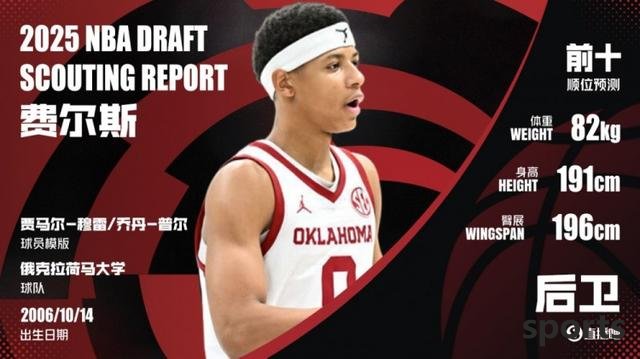
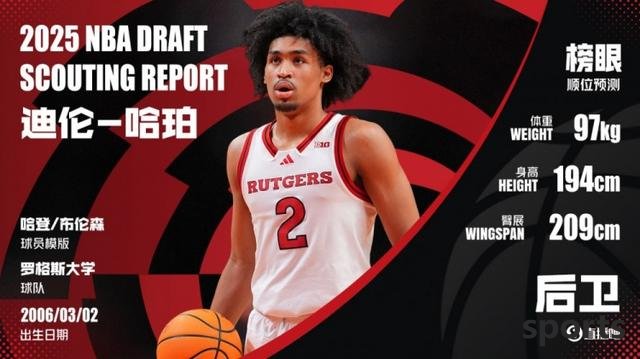
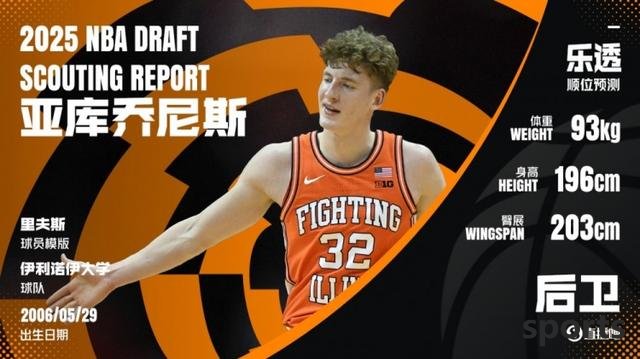
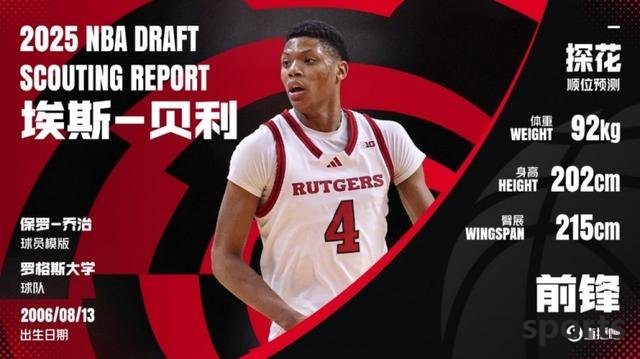
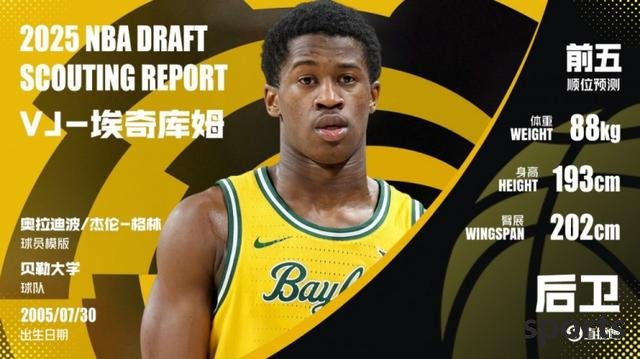
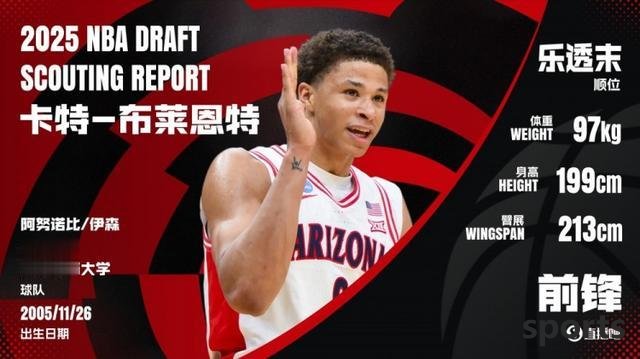

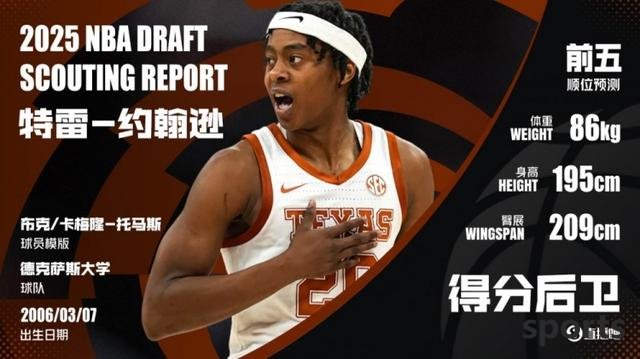
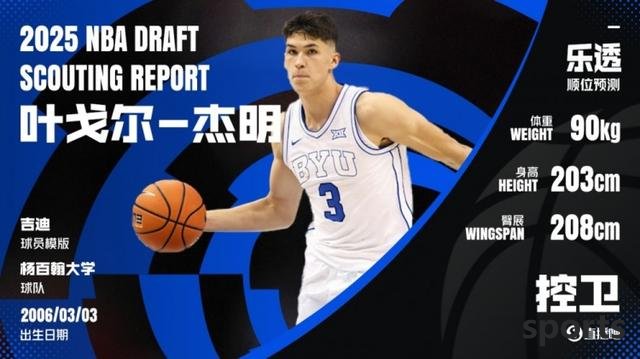

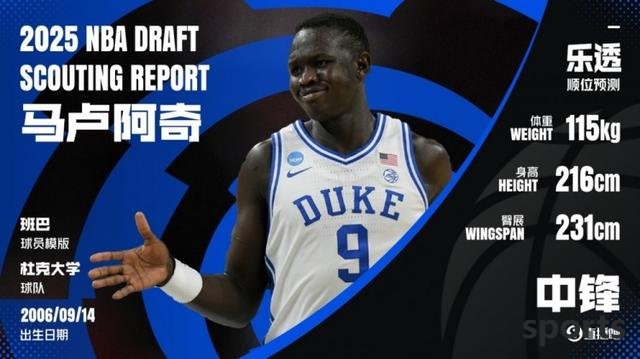
- Recent Posts
-
- After the Nuggets win: Gordon
- 5 All-Stars + 1 Championship +
- Overtake Wade s letters! Yali
- Beverly: There should be no mo
- Last season, he was forced to
- Why James Harden is the supers
- Eternal Classic! Wade wore Kob
- The first person in the Celtic
- Klay Thompson calls Kyrie Irvi
- Shin Kyung is the No. 16th pic
- Hot Posts
-
- How strong is the strongest hi
- Yang Hansen tried out the Warr
- NBA rumor: Kevin Durant believ
- Looking forward! 2025-2026 NBA
- Anthony is rated as the strong
- Replica Legend, Thunder Alexan
- Data analysis: Pacers 2-1 Thun
- NBA Summer United: Yang Hansen
- Yang Hansen s rookie contract
- Magic vs. Free throws: Hallibu
- Durant is destined to join the
- There are good and bad! Team m
- Which NBA team is more suitabl
- NBA character Alexander: The T
- Behind SGA’s Give Up 100 milli
- Hit 10+4+5+3! Yang Hansen made
- After Westbrook jumped out of
- The NBA playoff division final
- After Bill reached a buyout, t
- 2025 Rookie Observation (20):
- search
-
- Links
-
